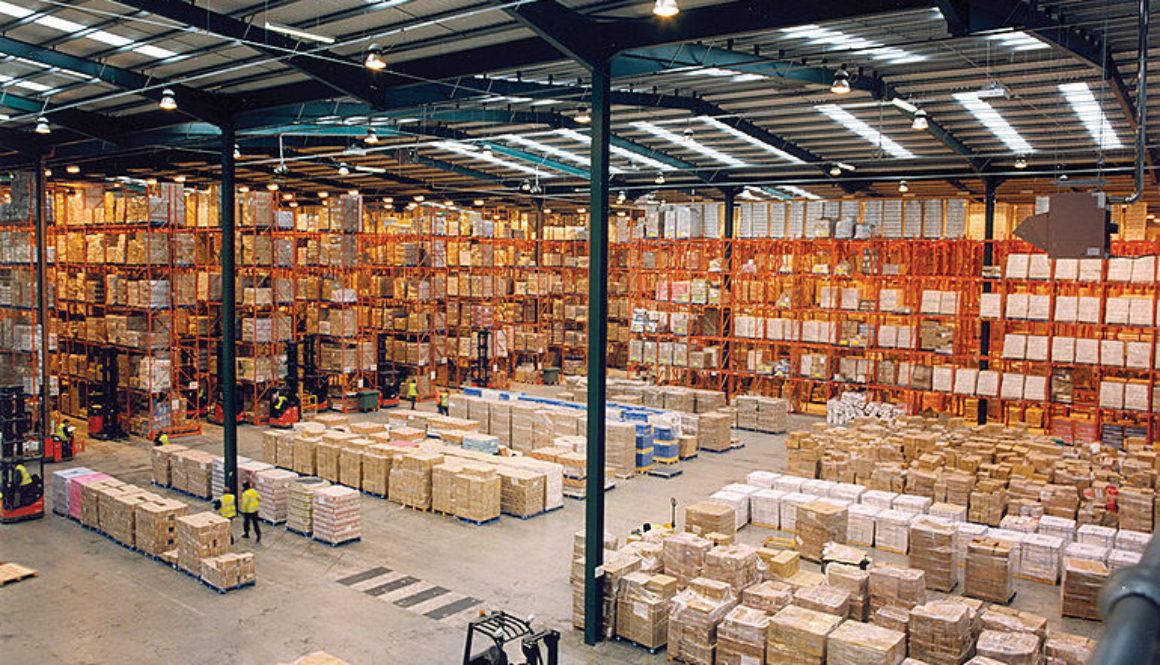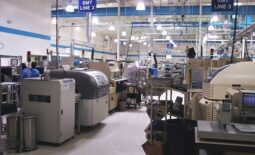Warehouse management in Mexico: A key to business productivity
A warehouse is the functional unit of a manufacturing firm that responds to particular objectives of support, control, and supply of raw materials and finished products. When there is optimal warehouse management in Mexico, improved costs and execution times favorably impact the company’s overall performance.
Having a warehouse management system in place to service Mexican manufacturing facilities helps companies to organize their operations and the flow of goods to and from the warehouse. This will result in a boost in company efficiency and will improve the organization’s overall productivity.
What is warehouse management in Mexico?
Warehouse management in Mexico is a comprehensive logistics process that ranges from the admission of material within the warehouse to its point of consumption. Therefore, it is a task that is designated to all of the activities related to the stock of materials and finished products.
It is a substantial part of lean manufacturing because it is a methodology that is designed to avoid excess stock to reduce waste and expense.
Warehouse management within the logistics process map: Limits and responsibilities
Warehouse management aims to optimize each stage of the production process to sustain, in a timely and constant manner, the supply and distribution of materials and products. It is one of the most essential activities for the successful operation of a company.
It is possible to place this work within a map of logistics processes. The logistics process map includes:
-
- Planning
- Supply
- Inventory management
- Warehouse management
- Order management
- Distribution
- Customer service
Importance and objectives of warehouse management in Mexico
Warehouse management in Mexico provides superior value in monitoring services and products. That is, it has a positive impact on the performance of the supply chain and, therefore, also on customer satisfaction.
Additionally, it ensures the correct execution of the company’s multiple logistics processes ranging from sourcing to distribution of different goods and services, while maintaining a balance at all stock levels. This allows the delivery of an immediate response without delays in the production chain.
This process is closely related to the supply chain. Its optimal operation depends on an appropriate strategy and the implementation of technologies that streamline and automate the activities of different departments.
The objectives of warehouse management are to:
- Speed up deliveries of goods.
- Monitor each stage of the products.
- Increase staff productivity.
- Ensure deliveries in a timely way.
- Improve product quality.
- Maintain price inventories.
- Reduce operating costs.
Warehouse functions
A warehouse is a structured plant that regulates the flow of product stocks and performs the following functions:
Receiving goods
It allows companies to receive goods that have been sent by suppliers, checking that each one matches delivery documents and the quantity and quality of the order that has been made.
Storage
Determines the ideal location of the goods to promote their rapid location and handling. For this, it relies on fixed media such as tanks, industrial supports, shelves, etc.
Conservation
The preservation of stored items in good condition involves keeping them under hygienic and specified safety standards that have been defined for each item.
Existence control
This feature is key to determining the number of products in stock and how often more will be requested on each order to maintain and minimize storage costs.
Principles of warehouse management in Mexico
The storage and control of materials and products raise the cost of the latter without adding additional value. Despite this, they are mandatory activities within production operations. Companies must therefore be governed by the following fundamental warehouse principles:
- Entry to the warehouse will be restricted to essential personnel.
- The safety of the goods must be the responsibility of a single person.
- Input and output operations must have authorized documentation.
- Warehouse staff will be assigned according to their particular role to be performed.
- There should only be a maximum of two doors in the warehouse with the relevant security controls.
- Inform the inventory control and accounting area about all entries made in the warehouse.
- Products must have an identification card and a code for inventory control.
- Each material will be placed in the warehouse according to its classification to facilitate its location.
- Flexible warehouse distribution should be ensured to allow for variations with minimal investment.
Warehouse management processes
Warehouse management in Mexico has two cross-cutting guidelines, which are its main processes: Planning and organizing information. Under these two primary functions, there are further processes that complement warehouse administration activity.
Planning and organization
This stage of the process is a strategic point that provides balanced resource solutions under the policies and goals that have been defined to achieve the company’s overall strategy to improve its competitive position in the market. The activities to be performed in this process are:
Design of the distribution network
Companies that are manufacturing in Mexico must set distribution policies according to the industrial sector to which they belong by optimizing responsiveness to control demand variants.
The design of the distribution network includes the tactical location of warehouses and distribution centers that allow the management of the flow of products from their entry into the warehouse to their delivery to the customer.
On the other hand, particular distribution and storage requirements are identified to determine the type of warehouse and distribution centers that best suit needs and increase efficiency.
Responsibilities of warehouse management in Mexico
This is the process that defines whether the warehouse will be self-managed or subcontracted out to a third-party for administration. Highly competent third parties such as Tecma can offer greater control, long-term cost reduction, and the optimization of human resources.
Additionally, outsourcing this function promotes capital conservation and timely knowledge of storage and maintenance costs. Also, it supports the expansion of warehouse spaces to meet market demands.
Warehouse size
The dimensions of a warehouse must correspond to product and demand characteristics. Other factors that must be considered for calculating the size of warehouses are:
- Levels of customer service
- Storage systems
- Production times
- Layout of stock
- Aisle requirements
Warehouse design
To achieve an optimal and efficient flow of materials, the warehouse and distribution center must be located in the appropriate area under the conditions that allow all operations to be carried out. It is also necessary that appropriate equipment and technology be present.
Warehouse design facilitates order preparation and accuracy, as well as stock placement to drive competitive advantages with diligent ordering cycles and better customer service.
Reception
This is a process of planning the entry, unloading, and verifying goods which aims to automate each stage of receipt to minimize human intervention that does not directly add value to the products.
Storage
This process is related to the preservation of products to avoid risks to warehouse personnel and the physical warehouse itself. For this purpose, the warehouse space must be divided into the following areas:
- Reception
- Reserve stock
- Preparing orders
- Consolidation
- Maneuver
- Offices
Movement of goods
Moving the goods is possible thanks to various conveyances that allow the simultaneous handling of various materials from the reception area to the storage location.
Information
Warehouse management in Mexico focuses on improving the efficiency of the flow of goods and consequently the flow of information, which is an axis of orientation. This thread is applied in each of the above because each thread requires performance reports that help record daily activity and process evolution.
MRP software for warehouse management in Mexico
Warehouse management in Mexico involves multiple processes through which goods and products are handled. When manufacturers have robust inventories, it becomes a complex proposition to manage them. This precipitates the need to put technology to use. Enterprise software is required.
Thanks to MRP software it is possible to enhance the profitability of companies by providing an advanced strategy of planning and control of the materials and the production process to which they are subjected.
This system optimizes the production, scheduling, and control of stocks used in warehouse management in Mexico. Its activity within each company focuses on the:
- Planning of production activities and delivery orders.
- Automatic updating of stock reports for materials and products.
- Supply of materials to the production area and the maintenance of consistent product availability for delivery to customers.
With Visual ERP companies can manage and control their warehouse. Thanks to this tool MRP systems facilitate tasks not only at the operational level but also at the administrative level. This allows access to a broad knowledge of the performance of activities, which facilitates good decision making and internal communication




